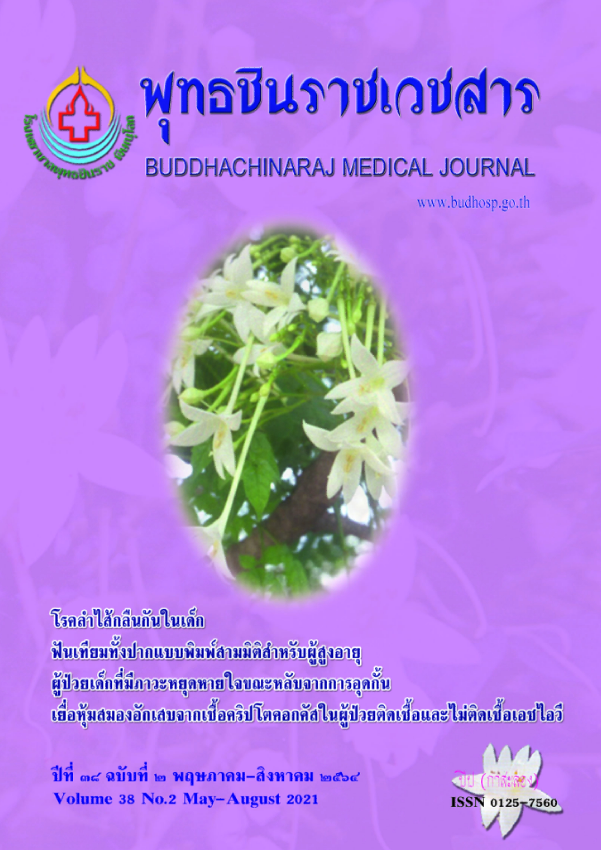The Effect of Nefopam Administration during Laparoscopic Cholecystectomy in Postoperative Pain Management
Nefopam Administration during Laparoscopic Cholecystectomy
Keywords:
laparoscopic cholecystectomy, postoperative pain management, nefopamAbstract
Multimodal analgesia decreases opioid consumption and associated adverse effects. Continuous use of nefopam reduces postoperative pain and opioid requirement. The purpose of prospective randomized double-blind, placebo-controlled study was to compare its effectiveness in analgesia of postoperative morphine after one dose of 20-mg intravenous nefopam versus placebo during laparoscopic cholecystectomy. Forty five laparoscopic cholecystectomy patients were enrolled and 42 of them were analyzed (21 patients in each group). Mean age were 48 years (21-63 years) and 73.8% were female (n = 31). The amount of morphine received in the post-anesthesia care unit (PACU) were 4.90 mg in nefopam group and 4.86 mg in placebo group, respectively (p = 0.952). The amount of morphine received 24 hours after surgery in nefopam and placebo groups were 6.14 and 5.81 mg, respectively (p = 0.743). Adverse effects i.e., nausea, vomiting, tachycardia, sweating and pruritus in both groups were not different. Forty three percent in both groups experienced nausea and vomiting. One patient in each group had postoperative urinary retention. In conclusion, single dose of nefopam during laparoscopic cholecystectomy does not affect the amount of morphine use in PACU and 24-hour post operation compared to placebo. However, adverse events are not different between two groups
References
2. Tebala GD, Belvedere A, Keane S, Khan AQ, Osman A. Day-case laparoscopic cholecystectomy: analysis of the factors allowing early discharge. Updates Surg 2017;69(4):461-9.
3. Rosero EB, Joshi GP. Hospital readmission after ambulatory laparoscopic cholecystectomy: incidence and predictors. J Surg Res 2017;219:108-15. doi: 10.1016/j.jss.2017.05.071
4. Gould TH, Crosby DL, Harmer M, Lloyd SM, Lunn JN, Rees GA, et al. Policy for controlling pain after surgery: effect of sequential changes in management. BMJ 1992;305(6863):1187-93. doi: 10.1136/bmj.305.6863.1187
5. Hilvering B, Draaisma WA, van der Bilt JDW, Valk RM, Kofman KE, Consten ECJ. Randomized clinical trial of combined preincisional infiltration and intraperitoneal instillation of levobupivacaine for postoperative pain after laparoscopic cholecystectomy. Br J Surg 2011;98(6):784-9.
6. Kehlet H, Jensen TS, Woolf CJ. Persistent postsurgical pain: risk factors and prevention. Lancet (London, England) 2006;367(9522):1618-25.
7. Patel HRH, Linares A, Joseph JV. Robotic and laparoscopic surgery: cost and training. Surg Oncol 2009;18(3):242-6.
8. Kehlet H, Holte K. Effect of postoperative analgesia on surgical outcome. Br J Anaesth 2001;87(1):62-72.
9. Sanansilp V. Postoperative pain management. In: Phakanrattana U, Sanansilp V, Suksompong S, Toomtong P, editors. Textbook of anesthesia. Bangkok, Thailand: Department of Anesthesiology, Faculty of Medicine, Siriraj Hospital, Mahidol University; 2013. p.781-808.
10. The Royal College of Anesthesiologists of Thailand, Thai Association for the Study of Pain. Clinical Guidance for Acute Postoperative Pain Management. Bangkok, Thailand: The Royal College of Anesthesiologists of Thailand; 2019.
11. Alfonsi P, Adam F, Passard A, Guignard B, Sessler DI, Chauvin M. Nefopam, a non-sedative benzoxazocine analgesic, selectively reduces the shivering threshold. Anesthesiology 2004;100(1):37-43.
12. Choi SK, Yoon MH, Choi J Il, Kim WM, Heo BH, Park KS, et al. Comparison of effects of intraoperative nefopam and ketamine infusion on managing postoperative pain after laparoscopic cholecystectomy administered remifentanil. Korean J Anesthesiol 2016;69(5):480-6.
13. Zhao T, Shen Z, Sheng S. The efficacy and safety of nefopam for pain relief during laparoscopic cholecystectomy: a metaanalysis. Medicine 2018;97(10):e0089. doi:10.1097/MD.0000000000010089
14. Kim EM, Jeon JH, Chung MH, Choi EM, Baek SH, Jeon PH, et al. The effect of nefopam infusion during laparascopic cholecystectomy on postoperative pain. Intern J Med Sci 2017;14(6):570-7.
15. McLintock TT, Kenny GN, Howie JC, McArdle CS, Lawrie S, Aitken H. Assessment of the analgesic efficacy of nefopam hydrochloride after upper abdominal surgery: a study using patient controlled analgesia.Br J Surg 1988;75(8):779-81.
16. Mimoz O, Incagnoli P, Josse C, Gillon MC, Kuhlman L, Mirand A, et al. Analgesic efficacy and safety of nefopam vs. propacetamol following hepatic resection. Anaesthesia 2001;56(6):520-5.
17. Hudcova J, McNicol E, Quah C, Lau J, Carr DB. Patient controlled opioid analgesia versus conventional opioid analgesia for postoperative pain. Cochrane Database Sys Rev 2006;18(4):Cd003348. doi: 10.1002/14651858.CD003348.pub2
18. Chompubai P, Chaiboon P, Taecholarn P. Analgesia after administration of one or two dose of nefopam for appendectomy: a randomized controlled trial. Thai J Anesthesiol 2019;45(1):27-33.






